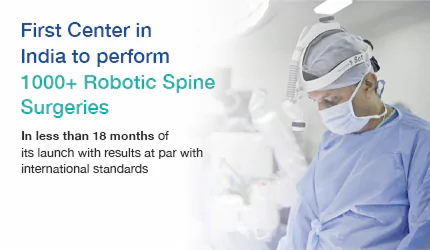A cervical fracture or dislocation is one of the most serious spine injuries that can occur. Unlike typical neck pain from muscle strain or arthritis, these injuries involve broken bones or displaced joints in your neck that can potentially damage your spinal cord and threaten your ability to move your arms and legs.
If you've been in a serious accident and have been told you have a cervical fracture or dislocation, you're facing a critical medical situation that requires immediate expert care. Understanding your condition and treatment options is essential, as the decisions made in the coming hours and days can significantly impact your long-term function and quality of life.
Understanding Cervical Fractures and Dislocations
What Makes These Injuries So Serious
Your cervical spine (neck) contains seven vertebrae that protect your spinal cord – the vital nerve pathway between your brain and the rest of your body. When these bones are fractured or joints are dislocated, several critical problems can occur:
Spinal cord injury risk: Broken or displaced bones can compress or damage the spinal cord, potentially causing:
-
Paralysis of arms and legs (quadriplegia)
-
Partial paralysis or weakness
-
Loss of sensation below the injury level
-
Breathing difficulties
-
Loss of bladder and bowel control
Instability: Fractures or dislocations can make your neck unstable, meaning normal movement could cause further damage to the spinal cord.
Nerve compression: Even without spinal cord injury, broken bones can compress individual nerves, causing arm pain, weakness, or numbness.
Types of Cervical Injuries
Cervical Fractures:
-
Broken bones in the neck vertebrae
-
Can range from stable hairline cracks to unstable complete breaks
-
May or may not involve spinal cord injury
Cervical Dislocations:
-
Joint displacement where vertebrae move out of normal position
-
Often associated with ligament damage
-
High risk of spinal cord injury due to canal narrowing
Fracture-Dislocations:
-
Combination of broken bones and joint displacement
-
Among the most unstable and dangerous cervical injuries
Common Causes
High-energy trauma (most common):
-
Motor vehicle accidents
-
Falls from significant heights
-
Diving accidents in shallow water
-
High-impact sports injuries
Lower-energy trauma in vulnerable patients:
-
Falls in elderly patients with osteoporosis
-
Minor trauma in patients with pre-existing spine conditions
-
Sports injuries in contact sports
Immediate Assessment and Diagnosis at MIRSS
Cervical fractures and dislocations require emergency evaluation and specialized care:
Emergency Evaluation
-
Immediate immobilization to prevent further spinal cord damage
-
Neurological assessment to determine if spinal cord injury has occurred
-
High-resolution CT scans to identify fracture patterns and instability
-
MRI scans to assess spinal cord injury and ligament damage
-
Advanced imaging analysis to plan surgical approach if needed
Injury Classification
Stable vs Unstable Injuries:
-
Stable injuries: Unlikely to cause further damage with normal movement
-
Unstable injuries: Risk of additional spinal cord damage without surgical stabilization
With vs Without Neurological Injury:
-
Neurologically intact: No spinal cord or nerve damage
-
Incomplete injury: Partial spinal cord damage with some function remaining
-
Complete injury: Total loss of function below the injury level
Treatment Approach: Emergency Stabilization First
Immediate Care
Non-surgical stabilization:
-
External immobilization with cervical collar or halo vest
-
Spinal cord injury management protocols
-
Prevention of secondary injury
When immediate surgery is needed:
-
Unstable fractures with neurological injury
-
Progressive neurological deterioration
-
Fractures that cannot be aligned with external methods
-
Open fractures or injuries with bone fragments in the spinal canal
Surgical Decision Making
Surgery is typically recommended for:
-
Unstable fractures that risk further spinal cord damage
-
Neurological compression requiring immediate decompression
-
Failed non-surgical treatment where alignment cannot be maintained
-
Multi-level injuries requiring complex reconstruction
Surgical Options for Cervical Fractures and Dislocations
The choice of surgical procedure depends on:
-
Location and pattern of injury
-
Presence of neurological injury
-
Bone quality and patient health
-
Need for decompression vs stabilization
Posterior Approaches (Back of Neck)
Lateral Mass Screw Fixation
-
When used: Fractures of C3-C6 vertebrae, certain dislocation patterns
-
What it involves: Screws placed into the side portions of vertebrae with connecting rods
-
Advantages: Preserves some neck motion, good for multi-level injuries
-
Best for: Upper cervical fractures, facet joint injuries
Pedicle Screw Fixation
-
When used: Fractures requiring maximum stability, lower cervical injuries
-
What it involves: Screws placed through the strongest part of the vertebrae
-
Advantages: Strongest possible fixation, excellent for unstable injuries
-
Best for: Severe instability, fracture-dislocations
Anterior Approaches (Front of Neck)
Anterior Cervical Corpectomy and Fusion (ACCF)
-
When used: Fractures with bone fragments compressing the spinal cord from the front
-
What it involves: Removal of damaged vertebral body and disc, reconstruction with graft and plate
-
Advantages: Direct decompression of spinal cord, excellent fusion rates
-
Best for: Burst fractures, vertebral body injuries with spinal cord compression
Combined Approaches
360-degree fusion (front and back):
-
When used: Severe instability, failed previous surgery, complex injuries
-
What it involves: Surgery from both front and back for maximum stability
-
Best for: The most unstable injuries requiring complete reconstruction
Advanced Surgical Technology at MIRSS
Given the critical nature of cervical fracture surgery, advanced technology plays a crucial role:
Robotic-Assisted Surgery
Our MazorX Stealth Edition (Medtronic) – an advanced spine robot with integrated navigation capabilities – provides:
-
Precise preoperative planning using 3D models of your specific fracture pattern
-
Real-time surgical guidance during hardware placement in damaged anatomy
-
Enhanced accuracy in screw placement through fractured or displaced bones
-
Reduced operative time in these critical procedures
Intraoperative Imaging
High-resolution cone beam CT during surgery allows:
-
Real-time verification of implants/screw placement
-
Planning and guidance for bony resection
-
Planning decompression procedures
-
Navigation for powered instruments
Specialized Surgical Environment
Our state-of-the-art modular operating theaters feature:
-
Integrated robotic and imaging systems
-
Advanced spinal cord monitoring capabilities
-
Optimal setup for emergency and complex cervical procedures
The Surgical Process at MIRSS
Emergency Preparation
For urgent cases:
-
Immediate surgical planning using robotic planning software
-
Coordinated team approach with our dedicated spine anesthesia team
-
Spinal cord monitoring preparation for high-risk cases
-
Blood bank preparation for potential significant blood loss
During Surgery
Procedure time varies widely (2-8 hours) depending on complexity:
-
Anesthesia: Our specialized spine anesthesia team provides expert care for these high-risk procedures.
-
Positioning: Extreme care in positioning to prevent further spinal cord injury.
-
Robotic-Guided Reduction: When possible, robotic assistance helps achieve proper alignment of fractured or dislocated bones.
-
Decompression: Removal of bone fragments or tissue compressing the spinal cord.
-
Stabilization: Robotic-guided placement of screws and rods for stability.
-
Neuromonitoring: Continuous intraoperative neuromonitoring throughout the procedure to protect spinal cord function.
-
Final Assessment: Comprehensive imaging to confirm adequate reduction, decompression, and hardware placement.
Our specialized OR staff experienced in trauma and emergency spine surgery coordinate throughout these critical procedures.
Recovery: What to Expect
In the Hospital
-
Hospital stay typically 3-7 days (depends on patient to patient and injury severity)
-
Intensive monitoring for neurological changes
-
Pain management with specialized protocols
-
Early mobilization when safe, with physical therapy guidance
-
Comprehensive care including respiratory therapy if needed
Recovery Timeline
First 2 Weeks:
-
Neurological monitoring: Assessment for any changes in function
-
Wound healing: Care of surgical incisions
-
Gradual mobilization: As tolerated based on stability of repair
-
External support: May require cervical collar or brace
Weeks 2-8:
-
Progressive activity increase: Based on healing and stability
-
Physical therapy: Focusing on safe movement and strengthening
-
Neurological recovery: May continue for months in patients with spinal cord injury
-
Follow-up imaging: To assess bone healing and hardware position
Months 2-6:
-
Fusion healing: Bone healing process continues
-
Functional recovery: Return to appropriate activities
-
Ongoing rehabilitation: Especially important for patients with neurological injury
-
Regular monitoring: Assessment of fusion progress
6+ Months:
-
Solid fusion: Typically achieved by this time
-
Maximum neurological recovery: Usually achieved by 1-2 years
-
Return to activities: Based on extent of injury and recovery
-
Long-term follow-up: Ongoing care as needed
Rehabilitation with MIRSS
Our dedicated spine physiotherapy team creates specialized recovery programs focusing on:
-
Neurological recovery optimization for patients with spinal cord injury
-
Safe mobility training appropriate for the level of stability
-
Strength and coordination restoration
-
Adaptive techniques for patients with permanent limitations
What Recovery Looks Like
For neurologically intact patients:
-
Pain relief: Usually significant improvement
-
Function restoration: Most return to previous activity levels
-
Motion limitation: Some restriction at fused levels
-
Long-term outlook: Excellent for return to normal life
For patients with spinal cord injury:
-
Stabilization: Prevention of further neurological deterioration
-
Functional recovery: Variable depending on injury severity
-
Adaptive strategies: Learning new ways to perform activities
-
Long-term care: Ongoing rehabilitation and support
Warning Signs to Watch For
Contact your doctor immediately if you experience:
-
Any new weakness or numbness
-
Increasing neck pain
-
Breathing difficulties
-
Signs of infection (fever, wound drainage)
-
Any changes in bladder or bowel function
Success Rates and Long-term Outcomes
Cervical fracture surgery outcomes depend heavily on:
-
Severity of initial injury
-
Presence of spinal cord injury
-
Timing of surgical intervention
-
Patient age and overall health
For neurologically intact patients:
-
Excellent outcomes: 90%+ return to normal function
-
Pain relief: Significant improvement in most cases
-
Stability: High fusion rates with modern techniques
For patients with spinal cord injury:
-
Prevention of further damage: Achieved in most cases
-
Neurological recovery: Variable, best in incomplete injuries
-
Functional improvement: Often significant with rehabilitation
Why Choose MIRSS for Cervical Trauma Care?
Comprehensive Expertise
-
Experienced trauma spine surgeons specializing in cervical fractures and dislocations
-
24/7 emergency capabilities for urgent cases
-
Multidisciplinary team including specialized anesthesia, nursing, and rehabilitation specialists
-
Specialized OR staff trained in emergency spine trauma protocols
Advanced Technology
-
Advanced spine robotic surgery with integrated navigation
-
Intraoperative high-resolution imaging for real-time surgical guidance
-
Comprehensive neuromonitoring for spinal cord protection
-
State-of-the-art emergency facilities designed for trauma care
Patient-Centered Care
-
Immediate evaluation and treatment for emergency cases
-
Family communication and support during critical periods
-
Comprehensive rehabilitation programs
-
Long-term follow-up and support
Questions to Ask Your Doctor
For cervical fracture/dislocation injuries, important questions include:
-
How stable is my injury, and what's my risk of paralysis?
-
Do I need immediate surgery, or can we try non-surgical treatment first?
-
What are my specific risks based on my injury pattern?
-
What can I expect in terms of neurological recovery?
-
What will my long-term limitations be?
Moving Forward
Cervical fractures and dislocations represent some of the most serious spine injuries, but with immediate expert care and appropriate treatment, many patients can achieve excellent outcomes. The key factors for success include:
-
Immediate recognition and proper immobilization
-
Expert evaluation and surgical planning
-
Appropriate surgical intervention when needed
-
Comprehensive rehabilitation
-
Long-term follow-up care
While these injuries can be life-changing, advances in surgical techniques, robotic technology, and rehabilitation have dramatically improved outcomes for patients with cervical trauma. The most important factor is receiving care from an experienced team that specializes in these complex injuries.
At MIRSS (Manipal Institute of Robotic Spine Surgery), Bangalore, we specialize in the most complex cervical trauma cases. Our team combines extensive experience in emergency spine surgery with advanced robotic surgical technology to provide optimal outcomes for patients with cervical fractures and dislocations. Our comprehensive approach – from emergency evaluation to long-term rehabilitation support – is designed to give you the best possible chance for recovery and return to function. From the moment of injury through complete recovery, our dedicated teams in Bangalore are committed to providing expert care during this critical time in your life.






